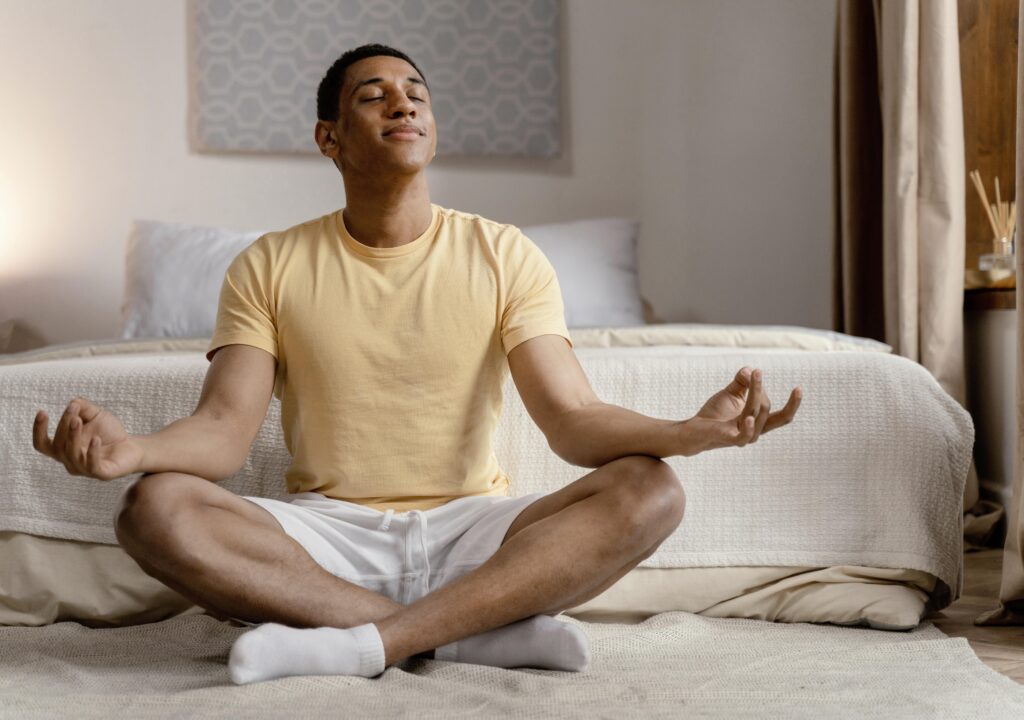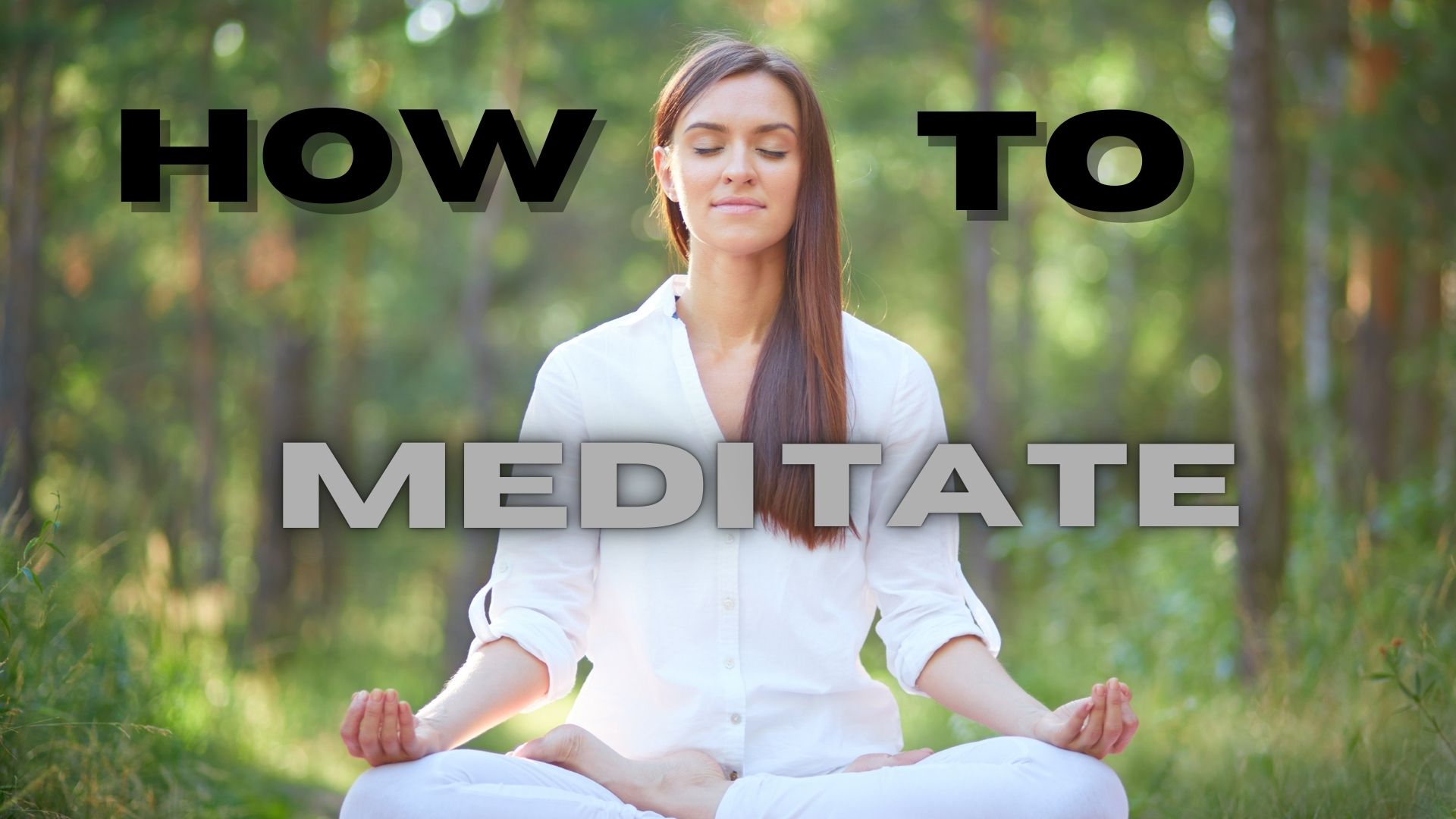How to meditate? Meditation is a practice that has been embraced by millions around the world for its numerous mental, emotional, and physical benefits. Whether you seek to reduce stress, enhance concentration, or connect with your inner self, learning how to meditate can be a transformative experience. This comprehensive guide will walk you through the essentials of meditation, offering practical tips and techniques to get you started on your journey to mindfulness.
What is Meditation?
Meditation is the practice of training attention and awareness to reach a state of mental clarity, emotional stability, and calmness. Techniques used in meditation include mindfulness, or focusing the mind on a specific object, thought, or action. Learning how to meditate involves understanding these core principles and applying them in a way that suits your personal needs and lifestyle.
Benefits of Meditation

Before diving into how to meditate, it’s essential to understand the benefits. Meditation has been scientifically proven to reduce stress, control anxiety, promote emotional health, enhance self-awareness, lengthen attention span, and may reduce age-related memory loss. Additionally, it can generate kindness, help fight addictions, improve sleep, and decrease blood pressure. With such a wide range of benefits, it’s no wonder many people are eager to learn how to meditate.
How to Meditate: A Step-by-Step Guide
Step 1: Locate a Calm and Quiet Area
The first step in learning how to meditate is finding a quiet place where you won’t be disturbed. This could be a corner of your room, a spot in your garden, or any place where you feel calm and comfortable. Ensure that this space is free from distractions and noise.
Step 2: Choose a Comfortable Position
You can sit on a chair, a cushion, or the floor. The key is to sit in a position where you can remain still and comfortable for several minutes. Keep your back straight, but not rigid, and let your hands rest on your knees or in your lap. Finding the right position is crucial in how to meditate effectively.
Step 3: Close Your Eyes and Breathe
Close your eyes to help minimize distractions and focus inward. Start by inhaling deeply through your nose, holding your breath for a while, and then slowly releasing it through your mouth. This breathing technique is fundamental in how to meditate as it helps calm your mind and body.
Step 4: Focus on Your Breath
Now, bring your attention to your breath. Notice the sensation of the air entering and leaving your nostrils, the rise and fall of your chest, or the feeling of your breath in your abdomen. This focus on breathing is a central component of how to meditate, as it anchors your attention and prevents your mind from wandering.
Step 5: Acknowledge and Let Go of Thoughts
As you meditate, you’ll likely find that your mind starts to wander. This is normal. When this occurs, just notice the ideas without passing judgment on them and gently return your attention to your breathing.This process of acknowledging and letting go is crucial in how to meditate and develop mindfulness.
Step 6: Start with Short Sessions
If you’re new to meditation, start with short sessions of 5-10 minutes. You can progressively extend the duration as you get more accustomed to the practice. Consistency is more important than duration when learning how to meditate.
Step 7: Practice Regularly
Meditation is most beneficial when practiced regularly. Aim to meditate daily, ideally at the same time each day, to establish a routine. Over time, this regular practice will deepen your meditation experience and enhance the benefits.

Common Meditation Techniques
Mindfulness Meditation
Mindfulness meditation involves focusing on your breath and being present in the moment. It’s a simple yet powerful technique for those learning how to meditate, as it helps cultivate awareness and acceptance of the present.
Guided Meditation
Guided meditation involves listening to a guide who leads you through the meditation process. This can be especially helpful for beginners learning how to meditate, as it provides structure and direction.
Loving-Kindness Meditation
This technique focuses on developing feelings of compassion and love towards yourself and others. It involves silently repeating phrases that convey goodwill and positive intentions. Loving-kindness meditation is a beautiful practice in how to meditate with a focus on emotional well-being.
Body Scan Meditation
Body scan meditation involves paying attention to different parts of your body, starting from your toes and moving up to your head. This practice helps you develop a deeper connection with your physical self and is a fundamental technique in how to meditate with an emphasis on bodily awareness.
Transcendental Meditation
Transcendental Meditation involves silently repeating a mantra—a word or phrase—to settle the mind and reach a state of profound relaxation. This technique can be a bit more advanced but is highly effective for those learning how to meditate seeking deeper experiences.
Tips for Effective Meditation
Be Patient and Persistent
The ability to meditate is something that takes practice. Be patient with yourself and persistent in your practice. Remember, the journey is as important as the destination when learning how to meditate.
Create a Ritual
Creating a pre-meditation ritual can help signal to your mind and body that it’s time to meditate. This could be as simple as lighting a candle, playing soft music, or practicing a few gentle stretches.
Use Technology Wisely
There are many apps and online resources available that offer guided meditations and tips on how to meditate. These can be particularly helpful for beginners.
Join a Meditation Group
Joining a group can provide support and encouragement. It’s also an excellent way to learn how to meditate from more experienced practitioners.
Stay Positive
Maintain a positive attitude towards your practice. It’s normal to have sessions where your mind feels restless or distracted. The key is to approach each session with a positive and open mindset.
Overcoming Common Challenges
Restlessness
It’s common to feel restless or fidgety when you start meditating. This is a natural part of the process. Try to stay still and focus on your breath. Over time, the restlessness will subside.
Distractions
External and internal distractions are inevitable. Whether it’s a noisy neighbor or your own thoughts, distractions can make it challenging to focus. Acknowledge these distractions without judgment and gently return your focus to your breath.
Doubt
Many beginners doubt whether they’re meditating correctly. Remember, there’s no “right” way to meditate. What matters is that you’re taking the time to be present and mindful. Trust the process and be kind to yourself.
Lack of Time
Finding time to meditate can be challenging, especially with a busy schedule. However, even a few minutes of meditation can be beneficial. Prioritize your practice by scheduling it into your daily routine.
How to Meditate for Different Goals
How to Meditate for Stress Relief
To use meditation for stress relief, focus on deep breathing techniques and mindfulness. Spend a few minutes each day sitting quietly and focusing on your breath. This practice can help calm your mind and reduce stress.
How to Meditate for Better Sleep
Meditation before bed can improve sleep quality. Try a guided meditation or a body scan to help relax your mind and body. Avoid stimulating activities before bed to enhance the effectiveness of your meditation.
How to Meditate for Concentration
If your goal is to improve concentration, practice mindfulness meditation. Regularly focusing on your breath or a single point of attention can enhance your ability to concentrate and stay focused on tasks.
How to Meditate for Emotional Well-being
For emotional well-being, loving-kindness meditation is highly effective. This practice fosters positive emotions and can help reduce feelings of anxiety and depression.
Conclusion
Learning how to meditate is a journey that can bring profound benefits to your life. By following the steps outlined in this guide and incorporating regular practice, you can develop a meditation habit that supports your mental, emotional, and physical well-being. Remember, the key to successful meditation is consistency and an open, accepting attitude. Embrace the process, and you’ll discover the transformative power of meditation in your life.
for more informative articles about health and technology, visit our website








